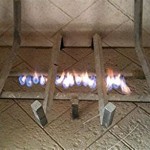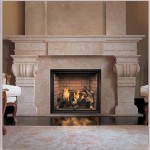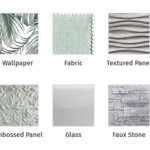Vermont Castings Fireplace Insert Model 1280: A Comprehensive Overview
The Vermont Castings Fireplace Insert Model 1280 represents a significant contribution to residential heating solutions, offering a blend of traditional aesthetics and modern combustion technology. This appliance is designed to transform a conventional masonry fireplace into a highly efficient and controllable heat source. Its enduring popularity stems from a combination of factors, including its robust construction, sophisticated design, and the reliable heating performance it delivers. This article aims to provide a comprehensive overview of the Model 1280, encompassing its features, technical specifications, operational aspects, and maintenance requirements.
Fireplace inserts, in general, address the inherent inefficiency of open fireplaces. Traditional fireplaces often lose more heat than they generate, drawing warm air from the room and sending it up the chimney. Fireplace inserts, like the Vermont Castings Model 1280, are self-contained units that fit within the existing fireplace opening, effectively sealing off the chimney and preventing heat loss. They utilize controlled combustion processes to extract maximum heat from the fuel, providing a much more efficient and economical heating option.
The Model 1280 is distinguished by its cast iron construction. Cast iron is renowned for its heat retention properties, allowing the insert to radiate heat evenly and for an extended period even after the fire has died down. This characteristic contributes to the overall comfort and efficiency of the heating process. Furthermore, cast iron is a durable material, ensuring the longevity of the appliance with proper care and maintenance.
Understanding the Design and Features of the Model 1280
The design of the Vermont Castings Fireplace Insert Model 1280 incorporates both functional and aesthetic elements. The traditional styling, often featuring intricate castings and a classic black finish, allows it to seamlessly integrate into a variety of home decors. The large glass viewing area provides a clear view of the fire, enhancing the ambiance and creating a focal point in the room.
Beyond its appearance, the Model 1280 is engineered for optimal performance. It typically incorporates features such as a baffle system, which redirects combustion gases to increase their residence time within the firebox. This allows for a more complete burn, reducing emissions and maximizing heat output. The air wash system, another important feature, uses strategically placed jets of air to keep the glass clean, ensuring unobstructed viewing of the fire. This system contributes to both the visual appeal and the efficient operation of the insert.
The inclusion of a variable-speed blower is a crucial component of the Model 1280's heating capabilities. The blower circulates heated air from the firebox into the room, significantly enhancing the insert's ability to distribute warmth evenly throughout the space. The variable speed control allows the user to adjust the airflow to suit their individual heating needs and preferences. This feature ensures a comfortable and consistent room temperature, even during periods of extreme cold.
Many models of the 1280 also feature a thermostatically controlled blower. This feature automatically adjusts the blower speed based on the firebox temperature, ensuring optimal performance and preventing overheating. The thermostat maintains a consistent temperature, optimizing fuel efficiency and providing a more comfortable heating experience.
Technical Specifications and Operational Considerations
The technical specifications of the Vermont Castings Fireplace Insert Model 1280 are critical for understanding its performance capabilities and installation requirements. These specifications typically include the BTU output, the heating capacity, the firebox size, the flue size, and the unit's overall dimensions and weight. The BTU output, measured in British Thermal Units, indicates the amount of heat the insert can generate per hour. The heating capacity refers to the square footage the insert is capable of heating, although this is highly dependent on factors such as insulation, climate, and house layout.
The firebox size determines the maximum log length that can be accommodated, directly impacting the burn time and the frequency of refueling. The flue size is a critical consideration for proper venting. The flue must be appropriately sized to ensure adequate draft and prevent the backdraft of harmful combustion gases into the home. It is crucial to consult with a qualified professional to ensure that the existing chimney is suitable for use with the Model 1280.
The operational aspects of the Model 1280 involve proper loading techniques, air control adjustments, and regular maintenance procedures. The type of wood used is a significant factor in the insert's performance. Seasoned hardwood, such as oak or maple, burns hotter and cleaner than softwood, resulting in greater efficiency and reduced creosote buildup. Proper loading techniques, such as stacking the wood in a crisscross pattern, allow for optimal airflow and combustion.
The air controls regulate the amount of air entering the firebox, affecting both the burn rate and the heat output. Adjusting the air controls allows the user to fine-tune the fire to achieve the desired level of warmth and burn time. Understanding the optimal air control settings for different types of wood and burning conditions is essential for efficient and safe operation.
Maintenance and Safety Procedures for Long-Term Performance
Regular maintenance is essential for ensuring the longevity, efficiency, and safety of the Vermont Castings Fireplace Insert Model 1280. This includes periodic cleaning of the firebox, the glass, and the flue. The firebox should be cleaned regularly to remove ash and debris, which can impede airflow and reduce heating efficiency. The glass should be cleaned with a specialized glass cleaner to remove creosote buildup and maintain a clear view of the fire.
The flue, or chimney, requires regular inspection and cleaning to prevent the buildup of creosote, a flammable byproduct of combustion. Creosote accumulation can significantly increase the risk of a chimney fire. Professional chimney sweeps are equipped with the tools and expertise to thoroughly clean the flue and ensure its safe operation. It is generally recommended to have the chimney inspected and cleaned at least once a year, or more frequently if the insert is used heavily.
Safety is paramount when operating any wood-burning appliance. It is crucial to install and maintain a functioning smoke detector and carbon monoxide detector. Smoke detectors provide early warning of a fire, while carbon monoxide detectors alert occupants to the presence of this odorless and deadly gas. Burning only seasoned wood is critical to reducing creosote buildup and emissions, while also providing optimal heat output. Never burn trash, plastics, or treated wood in the insert, as these materials can release harmful pollutants and damage the appliance.
The door gasket, which seals the door to the firebox, should be inspected regularly for signs of wear or damage. A damaged gasket can allow air to leak into the firebox, reducing efficiency and potentially causing the unit to overheat. Replacing the gasket when necessary ensures a tight seal and optimal performance.
Furthermore, it is important to adhere to all local building codes and regulations regarding the installation and operation of wood-burning appliances. Obtaining the necessary permits and inspections ensures that the insert is installed safely and in compliance with local ordinances. Consulting with a qualified professional during the installation process is highly recommended to ensure proper venting, clearances, and overall safety.
The Vermont Castings Fireplace Insert Model 1280 represents a blend of traditional craftsmanship and modern heating technology, offering a reliable and efficient solution for supplemental or primary heating. By understanding its design features, technical specifications, operational aspects, and maintenance requirements, users can maximize its performance and ensure its long-term safety and efficiency.

Large Winterwarm 1280 Vermont Castings Wood Burning Fireplace Insert Parts At Fireplaceparts Com

Vermont Castings Winterwarm Fireplace Insert Glass High Temp Ceramic

Vermont Castings Grate Winter Warm 1280 2100 Friendly Fires
Looking At Used Vermont Castings Winterwarm Insert Hearth Com Forums Home

Large Winterwarm Firebox Vermontcastings Parts For Vermont Castings Majestic

Wood Inserts Available From The Fire Within Muskoka

Vermont Castings Fireplace Insert Winterwarm Large 1280 2100 Replacement Ceramic Wood Stove Glass At Obadiah S Woodstoves

Large Winterwarm 1280 Vermont Castings Wood Burning Fireplace Insert Parts Vcparts Com

Inserts Archives Enchanted Fireside

Wood Direct Vent Gas Fireplace Inserts Anderson
Related Posts








